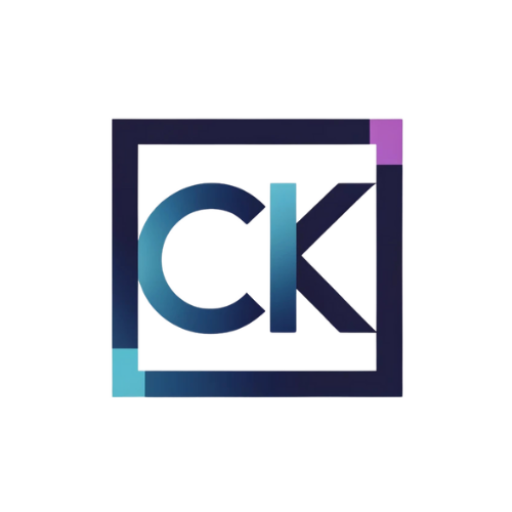Anúncios
career trends 2025 matter for your next move because hybrid work, AI, new pay norms, and fresh leadership are reshaping the job market.
You’ll see remote and hybrid setups remain common as companies use them to reach talent while protecting culture and output. Executives plan to keep flexible options, and many listings are fully remote, so your location no longer limits opportunities.
AI is augmenting roles more than replacing them, which raises the value of targeted skills and hands‑on learning you can build into your plan. Upskilling and clear signals on your resume or portfolio matter now.
Expect growing pay transparency, smarter benefits like student‑loan retirement matches, and Millennial leaders who push for purpose and inclusion. This guide previews which industries and roles are expanding and gives practical steps you can adapt to your field and timeline.
Introduction: Why career trends 2025 matter for your next move
Major shifts in how work is organized and paid are changing the choices you make next.
Anúncios
Quick context you can use right now:
Remote and hybrid policies stayed prominent in 2024; SHRM reports 82% of executives plan some remote work. AI adoption rose, and firms now prioritize upskilling. Pay transparency and smarter benefits—like mental health supports and student‑loan retirement matches under SECURE Act 2.0—are more common.
How the shifts affect your job search and growth
These changes shape where you look, how you present results, and what employers expect. Use data to set salary targets and to judge remote norms.
What this guide covers and how to apply it
- Concrete steps to show impact: project examples, content for resumes, and micro‑credentials.
- Multiple ways to act: update your resume, refine a portfolio, or run short learning sprints.
- What you need to prepare: evidence of impact, relevant projects, and learning paths that match market needs.
Tailor each suggestion to your field, level, and schedule. Nothing here guarantees outcomes, but the advice helps you make informed moves.
AI is augmenting work, not replacing it: Skills to build for 2025
New tools powered by AI help you cut repetitive work and free time for judgment, creativity, and domain know‑how.
Practical upskilling paths
Start small: learn basic data literacy to read dashboards, practice prompt design for clearer outputs, and study simple workflow automation to trim routine steps.
Real examples across industries
Chatbots handle routine customer queries. Managers use AI summaries to inform decisions. Clinicians get decision support that flags high‑risk cases. These uses show how roles expand when tech amplifies human choices.
Tools and learning tactics
- Take short micro‑credentials or badges and add a one‑page portfolio of outcome‑focused projects.
- Run an on‑the‑job pilot: automate a weekly report or build a retrieval FAQ, measure time saved, and document results.
- When companies assess AI ability they look for clear problem statements, measurable outcomes, and attention to bias and security.
Tip: pair technical learning with domain knowledge so solutions meet rules, ethics, and real user needs. Pick one process, record a baseline, pilot an AI step, measure change, and share the outcome.
Flexible and hybrid work settle in as a durable norm
Flexible schedules and mixed in-office/remote models have moved from pilot to policy at many organizations. SHRM reports about 82% of executives plan to allow some remote work, and roughly 35% of job postings in 2024 were fully remote.
Updated snapshot: remote/hybrid adoption and what employers expect
Organizations keep flexibility to access wider talent pools while balancing performance. Some teams still set in-office rhythms by function — for example, labs, sales, or client-facing roles.
Common employer expectations include reliable availability windows, camera-on norms for key meetings, and clear deliverable ownership.
Your playbook: communication, asynchronous collaboration, and time management
Use concise async updates, shared decision logs, and visible task boards to cut meeting overload. Post short progress notes and decision outcomes so everyone stays aligned.
- Time tactics: calendar blocking, focus sprints, and agreed response-time guidelines that protect deep work.
- Management rituals: weekly priorities, documented decisions, and short retros to refine norms.
- Signal reliability: publish your working hours, keep a simple progress dashboard, and highlight outcomes rather than activity.
Tip: negotiate the specifics that matter to your role — equipment stipends, core hours, or travel cadence — so arrangements fit both you and your employer.
Pay transparency expands as workers seek parity and trust
Pay disclosure is rising, and that shift changes how offers are written and how you prepare to negotiate.
What transparency means for offers, negotiations, and retention
What transparency looks like: public salary ranges, clear leveling frameworks, and documented promotion criteria that reduce surprises.
When companies publish bands, offers follow internal equity guardrails and geographic differentials. That sets boundaries for negotiation and makes the process more structured.
- Prepare with market data, your impact metrics, and comparable levels so you discuss total compensation, not just base pay.
- Ask about equity refresh schedules, bonus targets, and how performance maps to comp bands.
- Frame requests around business value and development paths that justify future pay growth.
Clear pay frameworks help employees trust employers and lower compression issues that hurt retention. Still, firms must balance budgets and parity, so timing and evidence strengthen your case without guarantees.
Benefits get smarter: mental health, student loan support, and flexibility
More companies are building benefits that reduce burnout and help you manage loans while saving for retirement.
Mental health takes center stage: enhanced EAPs and digital tools
Nearly 72% of employers plan to expand mental health offerings. That shows up as broader EAPs, coaching apps, and extra teletherapy slots.
How this helps: quicker access, private coaching, and on-demand modules that fit odd hours. Check session caps, wait times, and whether the program covers family members.
Student loan and retirement coordination: what the SECURE Act 2.0 enables
The SECURE Act 2.0 lets employers match retirement contributions based on your student loan payments.
Practical effect: you can pay down loans without pausing retirement savings. Ask HR how matching works, vesting schedules, and whether loan payments qualify automatically.
Designing your mix: healthcare, tuition assistance, and flexible arrangements
Compare options by out-of-pocket costs, provider networks, and HSA contributions. Look at tuition assistance, mental health programs, and flexible schedules that match your life stage.
- Check networks, session caps, and average wait times for care.
- Document your preferences (evening telehealth or coach hours) and ask companies about vendors.
- Review annually: plan changes, vesting, and how your role affects benefit value.
Why it matters: the right mix reduces burnout, boosts focus, and supports continuous learning so you can sustain your long-term goals.
New leadership dynamics: Millennials reshape culture and policy
Millennial leaders are rewriting workplace rules by combining technology fluency with a clearer sense of purpose.
You’ll see management styles that prioritize flexibility, inclusion, and transparent decision-making. Leaders such as Everette Taylor at Kickstarter and Fidji Simo at Instacart show how this plays out at scale.

Practical changes you may notice include regular feedback cadences, documented goals, and quick adoption of modern collaboration tools.
What that means for you: expect policies like flexible scheduling and remote options to shape daily routines and performance expectations.
“Bring lightweight pilots that prove value — data and clear outcomes win more often than big proposals.”
Match your proposals to leaders’ data-driven approach. Offer concise memos, baseline metrics, and short experiments that show impact across teams and years.
- Show cross-functional results and measurable outcomes.
- Use modern tools to communicate progress and decisions.
- Watch how your business or industry adapts—some companies change faster than others.
These shifts reshape how management rewards work and how employees get promoted. Aligning with the new norms helps you stay visible and influential as the workforce evolves.
Where the jobs are growing: in-demand industries and roles for 2025
Hiring is concentrating in a few fast-moving pockets where digital skills and domain knowledge meet real-world problems.
Artificial intelligence and data
Expect strong demand for ML engineers, data scientists, and AI ethicists as companies embed models into diagnostics, fraud detection, and autonomy.
Entry points: build a portfolio of model-driven projects, complete ML certs, and publish short case studies that show measurable impact.
Healthcare and biotech
Nursing, health informatics, and personalized medicine roles keep growing. Gene therapies and clinical-data work need people who blend care skills and analytics.
Entry points: clinical certifications, informatics bootcamps, and capstone projects that pair patient outcomes with data tools.
Cybersecurity and resilient tech
Analysts, red-team ethical hackers, and security leaders are in demand as threats rise and regulators tighten rules.
Entry points: security certs, hands-on labs, and documented incident-response exercises you can show employers.
Digital work at scale
EdTech, ecommerce, and supply-chain tech need product, content, and operations talent as automation and analytics scale systems.
Actionable steps: internships, instructional-design samples for education tools, and logistics analytics projects tied to real metrics.
- Where jobs cluster: AI/data, healthcare/biotech, cybersecurity, and digital-at-scale sectors.
- How to enter: certifications, focused portfolios, internships, and capstone work using current tools and stacks.
- Tip: map growth signals to your business context—customer needs, regulation, and available tools—before you commit.
Early-career reality check: navigating a cooler market for recent grads
With hiring softening, practical proof of your skills matters more than application volume alone.
The early-career market cooled in 2024: recent grad unemployment hit 5.3%, the highest in three years. That means consistent applications plus targeted outreach both matter.
Practical steps: networks, internships, micro-experience, and skills signaling
Set clear expectations. Apply often, but prioritize roles where you can show match and impact.
- Build micro-experiences: short freelance jobs, volunteer analytics, or campus IT tickets that let you collect measurable results.
- Consider structured programs: internships, apprenticeships, and fellowships that give supervised practice and references.
- Activate networks: alumni intros, informational interviews, and niche professional groups in your field.
- Signal education-to-employer fit: publish portfolios, list quantified outcomes, and earn certification badges tied to job requirements.
Resume tip: a skills-forward layout puts projects first, shows impact metrics, and links to demos. Run a weekly learning sprint to close one gap and add that plan to interviews.
Strategy: balance breadth (2–3 role families) with depth in one field so you stay flexible while telling a clear story to employers.
Conclusion
As norms shift, your best hedge is steady action: small learning sprints and short experiments that show real value. Artificial intelligence and new technology will change how you work, but practical proof wins attention.
Focus on continuous learning and one clear skill to build each quarter. Try a skills sprint, refresh a portfolio item, talk with a mentor, and run a targeted application cycle.
Align what you record to business goals—pay, growth, and job outcomes—so employers and employees see transferable results in the market and industry.
Keep health and ethics in view, and revisit this plan over the years as flexible work and policy shifts continue. For structure or accountability, consider a counselor or coach and follow reliable HR and workplace news.



